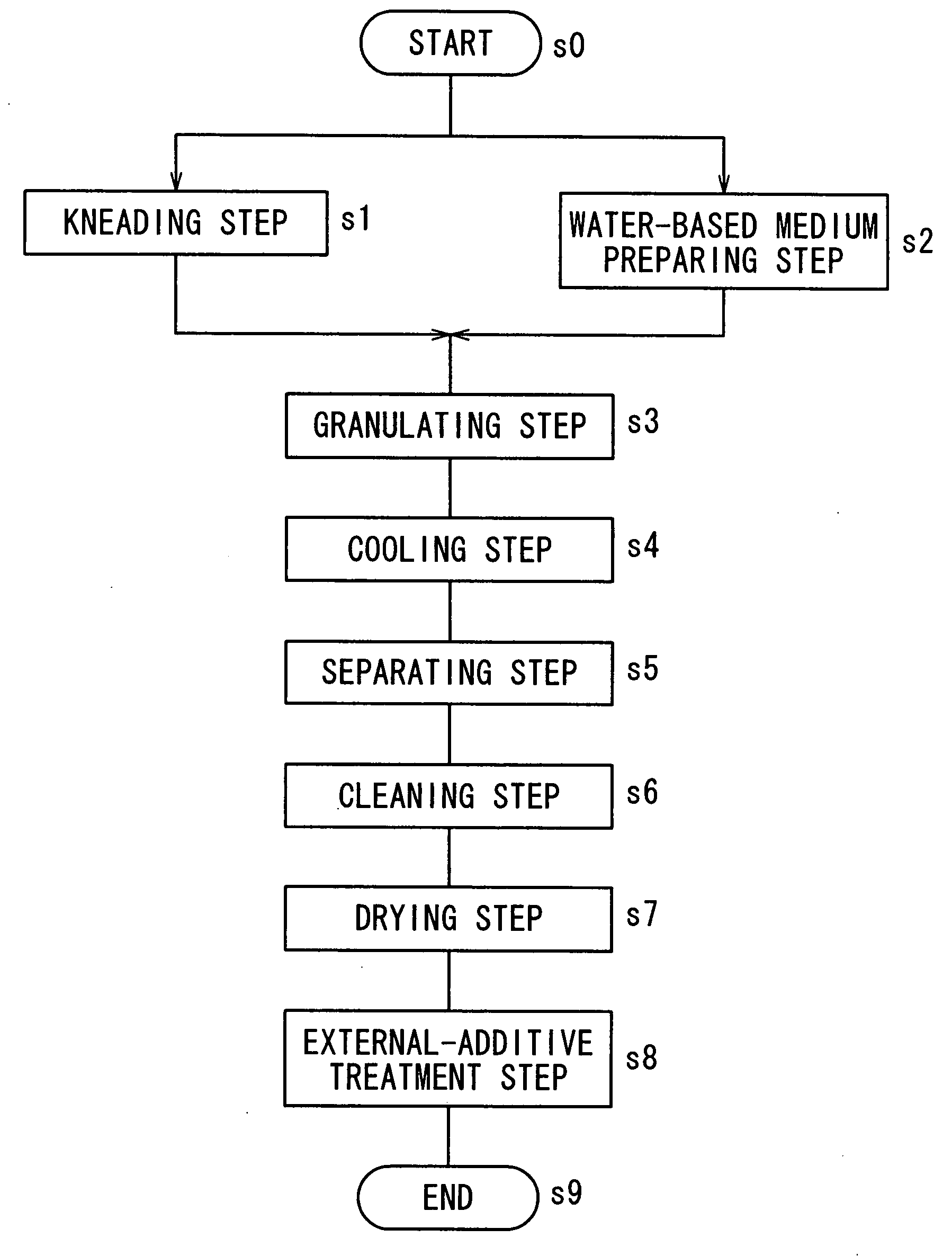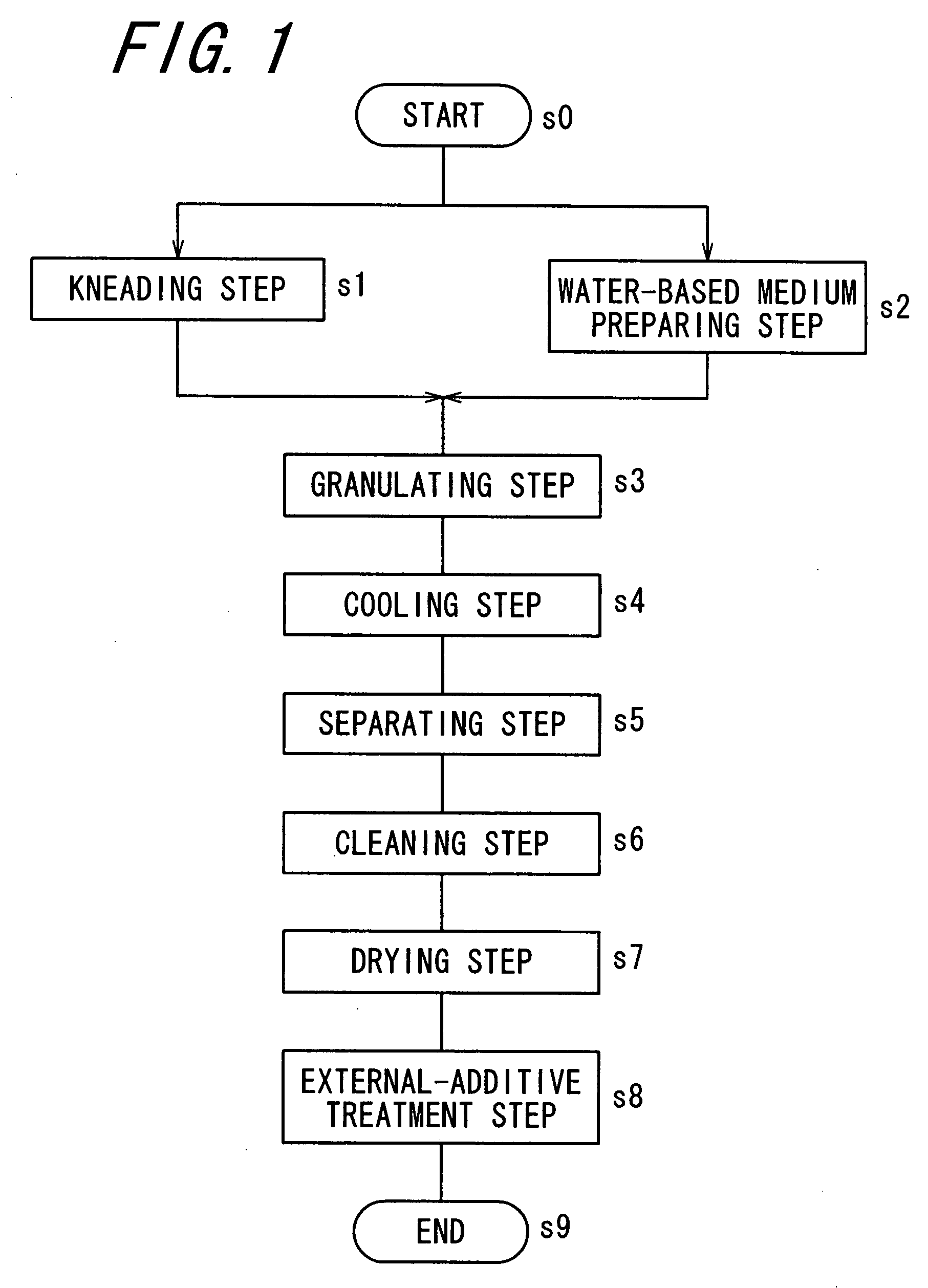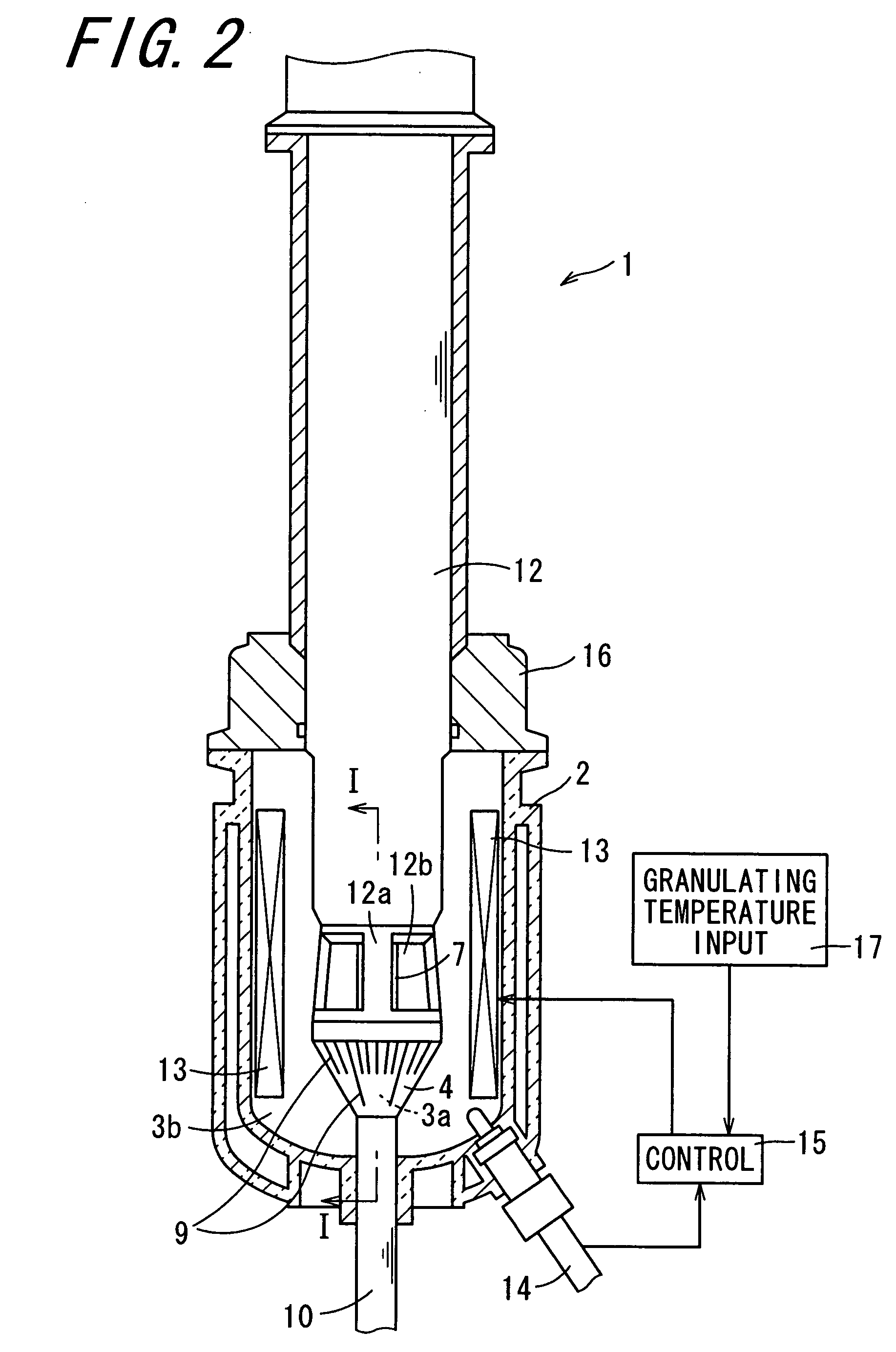Method for manufacturing toner
a manufacturing method and technology of toner, applied in the field of toner manufacturing, can solve the problems of plastic deformation and other problems, and achieve the effect of preventing the occurrence of toner filming caused by the desorbed release agent attaching to the surface of toner particles
- Summary
- Abstract
- Description
- Claims
- Application Information
AI Technical Summary
Benefits of technology
Problems solved by technology
Method used
Image
Examples
example 1
[0151][Kneading Step]
[0152]A toner composition containing: as a binder resin, 890 parts by weight of a polyester resin A (a glass transition temperature of 56.7° C., a peak-top molecular weight of 12,500, Mw / Mn=2.5, an acid number of 16, a softening temperature of 102° C., and a THF insoluble component of 0%), as a colorant, 50 parts by weight of C.I. pigment blue 15:3 (trade name: BLUE No. 26, manufactured by Daiichi Seika Co.), 10 parts by weight of a charge control agent (trade name: BONTRON E84, manufactured by Dainichi Seika Co.), as a release agent, 50 parts by weight of a wax (trade name: TOWAX161, manufactured by Towa Chemical Industry Co., Ltd.), was mixed and dispersed for three minutes by a blending machine (trade name: HENSCHEL MIXER, manufactured by Mitsui Mining Co.) to produce a raw material mixture. The raw material mixture was then kneaded by a two-axis extruder (trade name: PCM-30, manufactured by Ikegai Co., Ltd) with a cylinder setting temperature of 110° C., a b...
example 2
[0161]The same procedure as in Example 1 was followed except that the granulating temperature at the granulating step was changed to 95° C., to obtain a toner. The granulating temperature of 95° C. in the embodiment is a temperature at which the loss tangent of the kneaded material A reaches 3.0.
example 3
[0163]At the kneading step, the same procedure as in Example 1 was followed except that a polyester resin B (a glass transition temperature of 53.0° C., a peak-top molecular weight of 5,940, Mw / Mn=14.5, an acid number of 7.7, a softening temperature of 115° C., and a THF insoluble component of 0%) was used as a binder resin, to produce a kneaded material B. The softening temperature of the kneaded material B was 135° C.
[0164]The same procedure as in Example 1 was followed after the granulating step except that at the granulating step, the kneaded material was used instead of the kneaded material A and the granulating temperature was changed to 100° C., to obtain a toner. The granulating temperature of 100° C. in the embodiment is a temperature at which the loss tangent of the kneaded material B reaches 0.7.
PUM
 Login to View More
Login to View More Abstract
Description
Claims
Application Information
 Login to View More
Login to View More - R&D
- Intellectual Property
- Life Sciences
- Materials
- Tech Scout
- Unparalleled Data Quality
- Higher Quality Content
- 60% Fewer Hallucinations
Browse by: Latest US Patents, China's latest patents, Technical Efficacy Thesaurus, Application Domain, Technology Topic, Popular Technical Reports.
© 2025 PatSnap. All rights reserved.Legal|Privacy policy|Modern Slavery Act Transparency Statement|Sitemap|About US| Contact US: help@patsnap.com



